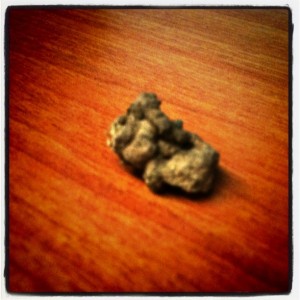Community
August 9, 2011
Day 2, Week 2 of TEMiC: Project Planning and so on…
For day two of Textual Editing Modernism in Canada (TEMiC) our discussions focused on planning both Digital and Print editorial projects. Because we are all at different stages in our projects (or yet to be determined projects) we tried to approach the subject as broadly as possible, sharing and elaborating at points of interests for all. For the sake of simplicity I am going to break the day into three sections (excluding lunch, though our conversations at lunch are often fruitful) and provide a snapshot of what we covered at each point in the day.
Preface:
We had some exciting news to start off the day. Apparently, Zailig Pollock’s grandchild has been potty trained. All it took were a few M&M’s. Exciting, no?
Part 1: Sage Advice from Zailig Pollock
First, I would like to express my sincere gratitude to Dr. Zailig Pollock whose advice has been invaluable to our discussions. His experience has provided me (and others, I am sure) with a unique and informed perspective on textual editing. My thinking has advanced exponentially in the past week and two days.
Our morning focused on the question “How should we approach editing projects?” And so we spent the morning creating a road map to begin to answer this question.
1. Choosing your institution: Its always important to find an institution with scholars who would be interested (or sympathetic) to your work. If you want to work on a digital editing project, you should try to find an institution with a potential supervisor/advisor who is interested in the Digital Humanities (DH). The same rule applies to Non-DH editing projects.
2. Choosing the author or group you would like to focus on: Try to choose an author or body of work you can justify editing, but also an author/work you are genuinely interested in.
3. Figure out where your material is located: It might be necessary to carry out extensive archival work. Being near (or far) from your material can have a dramatic impact on your work.
4. Permissions: Permissions can be tricky to acquire. Find out who holds the rights to the work, and be sure to consider issues such as privacy and ethics that may crop up.
5. Get to know your body of work: An editing project should be informed by the body of work and the work surrounding the body.
6. Theorizing your project: Decide on the methodolog(ies)y you wish to employ for your project. Deciding this early will help determine the work you do on the text and also shape the output.
After you theorize your project there are many different avenues you can take. The list above is a basic approach and of course there many variations.
Our conversations also stressed the importance of building realistic timelines and carefully considering the amount of work we take on. In addition, we discussed the complicated task of gaining permissions. Potentially stellar projects can be quashed if an editor is denied access or rights to the material. Many factors need to be considered by the editor(s) and those who hold the rights. Factors that can influence these issues include finances, competition, privacy, image control and more.
Part 2: Guest Speaker, Carole Gerson
In the afternoon we were visited by the esteemed and experienced Dr. Carole Gerson. Gerson’s work focuses primarily on early Canadian literature and Canadian book history. She has edited a number of volumes including Pauline Johnson: Paddling Her Own Canoe: The Times and Texts of E. Pauline Johnson (Tekahionwake) (2000) and E. Pauline Johnson, Tekahionwake: Collected Poems and Selected Prose (2002). Gerson’s talk consisted mainly of anecdotes. She focused not only on her successes as an editor, but also the issues she has faced over her career. These issues ranged from typos, reprints, and problems of design to lack of information access at crucial moments. A discussion of these issues was especially useful because we were able to see what we may be faced with in the future.
Part 3: Image Markup Tool
We spent the remainder of the afternoon looking at the work Zailig Pollock has been doing on The Digital Page with the Image Markup Tool (IMT). For those of you unfamiliar with the markup tool… IMT is a unique and simple tool which allows editors to focus (or tag) interesting points of a document. It is especially useful for annotating, marking up, and noting revisions in materials. One simply scans the image in and then uses IMT to tag the desired space (its a lot like tagging a friend in a photo on facebook). IMT is an extremely valuable and exciting tool because it allows the viewer to get as close to the document as possible without having to go to the archive (a trip we should encourage).
After the IMT tutorial we knocked off for the day. We covered a great deal of ground and I think we all have a better idea of the work we face and the options that are available to us as we proceed.
I’d like to cap this post with a photo of a small token I received from Zailig. The image below presents a worm-cast that he found in Prince Edward Island. What weird and relevant artefact!
“and many and many
come up atom by atom
in the worm-casts of Europe.”
– from “I’ve Tasted My Blood” by Milton Acorn
It seems I have concluded this post the way it has been prefaced…
